Before he was a celebrated painter and sculptor, Sir Daniel Winn was a child of war. His latest film, Chrysalis, transforms that past into visual allegory—a cinematic reflection on memory, identity, and the enduring power of art to heal. Shot on location in Vietnam, the film captures not only the landscape of a nation in transition, but the emotional terrain of a boy finding his place within it. A journey from a painful war-torn childhood to artistic rebirth, Chrysalis renders Sir Daniel Winn’s life of survival as a cinematic act of transformation.
“I have this innate ability and desire to create. My vision, my philosophy, my dreams, the core of who I am. Some things I don’t want to disclose because they’re too private. But so many people want to know more, and that’s why I share more of myself now.”
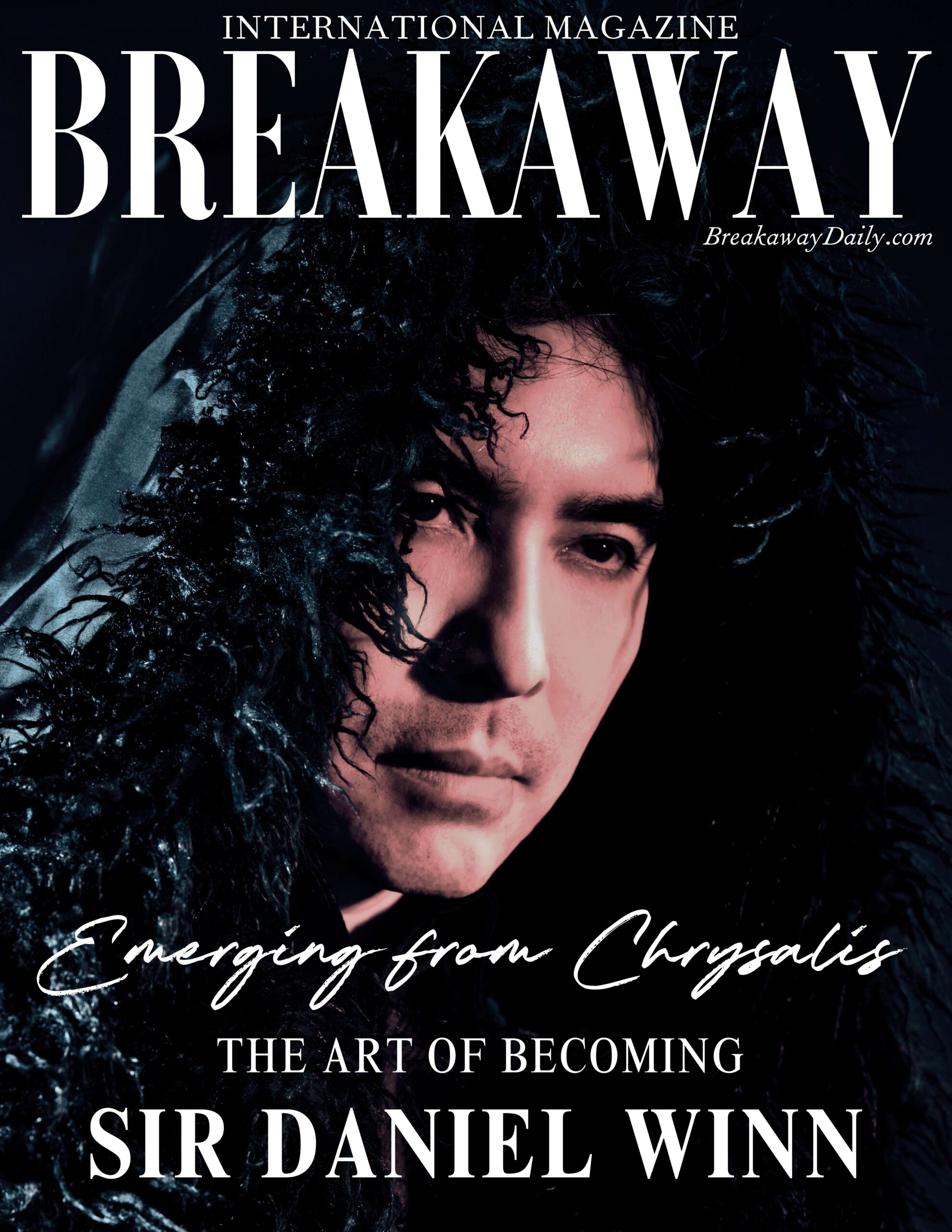
A Personal Archival History into Cinematic Truth
“My work is about my life experience, from my childhood up to now. Whether it was traumatic and emotional, or joyful and euphoric, I’ve incorporated it into my art as a way to record my experiences as my legacy. Since I have no children to carry on that legacy, my artwork itself becomes my journey—showing my pain and suffering, but also my joy and triumph. All of the experiences that have had the greatest impact on me, I want to put into my artistic visual interpretations. It’s my way of leaving a record of my life.”
Chrysalis emerges from the pages of Winn’s forthcoming memoir, a meditation on his early years in Vietnam during the war and his departure to the United States. Yet what sets the film apart is not its adherence to biographical drama—but its refusal of it. This is not history re-enacted, but reshaped—rendered in its most purest, evocative and emotionally resonant form.
Chrysalis is, at its core, about the fragmentation and reformation of identity. The film uses the chrysalis symbolism — the cocooned state between caterpillar and butterfly — as a central motif, exploring transformation as both salvation and burden. Nguyễn Vũ Uy Nhân delivers a moving performance as the young Daniel, capturing both the vulnerability and resilience of the artist’s turbulent early years.
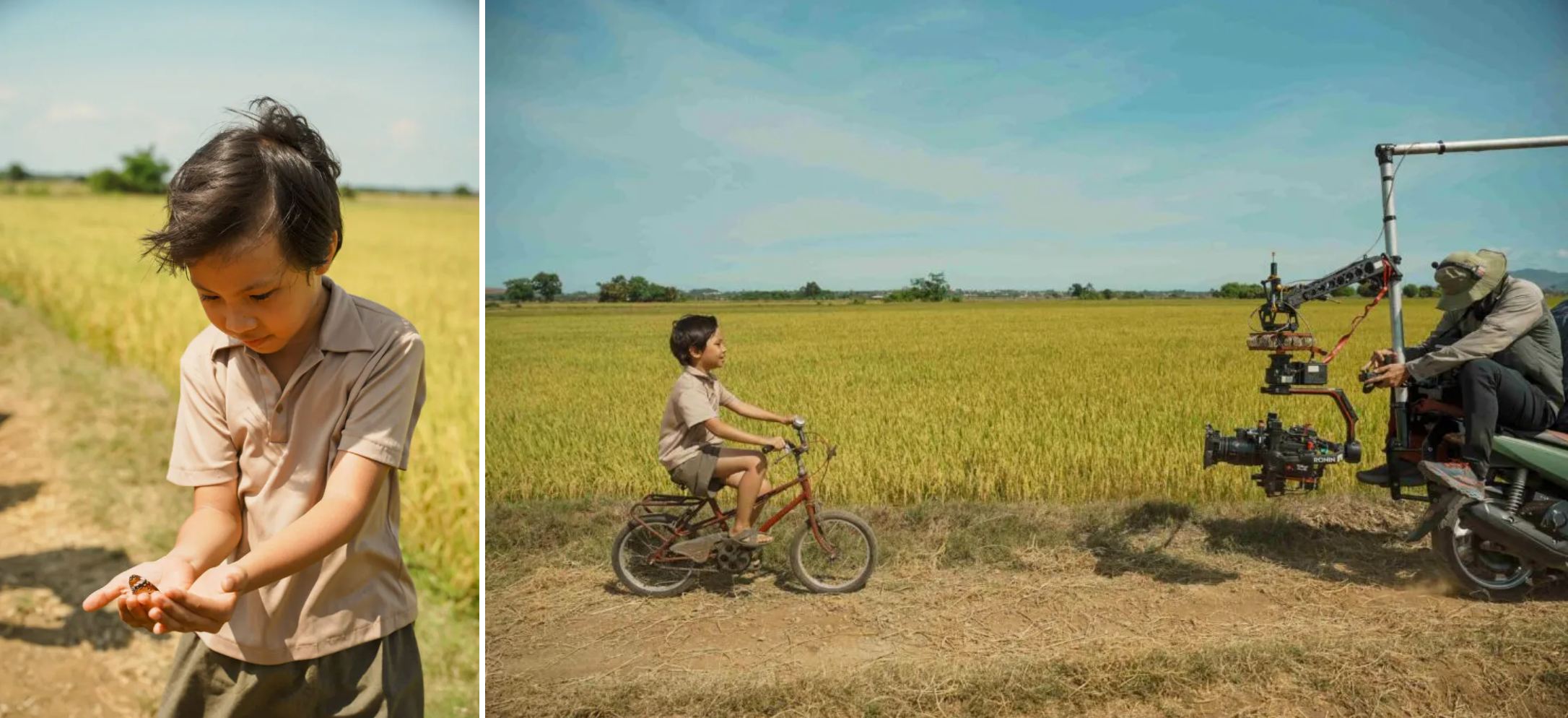
Realism as Spiritual Texture Painting with Light, Framing with Memory
It is evident through the film and Winn’s reflection on it how Vietnam has never left his soul — a sentiment echoed visually in the film, where generational memory and psychological trauma blur into one. Recurring motifs — a red bicycle, an apple, a gold watch — function as emotional anchors, bridging abstraction and realism, translating Winn’s visual art lexicon into cinematic movement.
“Film is movement—thousands of frames instead of just one. It creates the illusion of dimension and perspective in ways sculpture cannot, and it carries emotion in ways painting cannot. Through cinema, I can communicate my philosophy in countless ways, almost like speaking hundreds of languages at once. It allows infinite interpretations and emotions, expanding far beyond what I could ever say through painting or sculpture alone.”
Much of Chrysalis was shot on location in Vietnam, and that decision anchors the film’s atmosphere. The film leverages the country’s natural beauty and postcolonial modernity to create a landscape that is both grounded and otherworldly. Homes, orphanages, rural landscapes—many of them reconstructed or dressed to reflect Winn’s own memories—contribute to the film’s nearly documentary realism.
The realism of Chrysalis doesn’t imitate life—it channels it. These aren’t sets. They are spaces Winn has lived in, emotionally if not literally. The details are textured, worn, and tactile. Through the production design the thatched homes are imperfect. The orphanage feels lived-in, not stylized. We are not watching fantasy—we are stepping into history, filtered through the inner eye of an artist.
“That’s what I hope they take away—that through the eyes of my experience, they might understand a little more about themselves. As human beings, we all feel the same pain, hope, faith, love, and loss. My life experiences, communicated through my philosophy, are in essence about all of us. If viewers recognize themselves in that, it may change the way they see their purpose and why they exist in this universe.”

The Search for Meaning
Chrysalis unites his life story, his art, and his belief in transformation through creation. The film continues the evolution of Winn’s creative philosophy, Existential Surrealism, reflecting his lifelong fascination with the meaning of life. “It’s about my existence here—although brief, and often surreal—as having a purpose. And that purpose is for me to leave a legacy. That legacy is not just about art, but about existence itself: the meaning and purpose of life. All of us are always searching for the meaning of life, but the meaning is how each of us defines it for ourselves. My goal is to share my interpretation through painting, sculpture, and cinema art, so others might understand what I’ve gone through and reflect on their own lives. Hopefully, it gives them a way to gauge their own existence and consider their role and purpose in the universe.”
Chrysalis has been brought to the screen through a seamless collaboration between U.S. and Vietnamese creative teams — a true dialogue between two visual languages. Under the direction of American filmmaker J. Robert Schulz and the lens of German-American cinematographer Alexander Bonelli, the film unfolds with both visual grace and emotional depth.
“Filmmaking especially takes a village. It will take several hundred people and almost two years of work before its 2026 release. The people closest to me day to day are my artisans. I’ve done that work myself in the past, apprenticing for other artists, so I know what it takes. Whether they’re foundry workers, painters, actors, producers, or directors, I stay close to them because I want them to understand my vision and philosophy. I connect with them to share my innermost vision so that, in a way, they become me when they’re creating or preparing something. It has to feel authentic and true to who I am.”
The film was produced by Sir Daniel Winn alongside his longtime husband and business partner, Randall J. Slavin, through WS Productions. “It takes a village and an organized team to do what needs to be done. But what’s even more significant is having a partner who understands you completely—all your flaws, your triumphs, your best attributes, and your weaknesses. That person fills in the gaps where you are not strong. With Randy, for over thirty years as my partner and my husband, he is the very core of who I am. To give a metaphor, he is half my heart. I would not exist without him, and I believe vice versa. We are yin and yang. My weakness is his strength, and his weakness is my strength. Together we’ve been able to do what we do.”
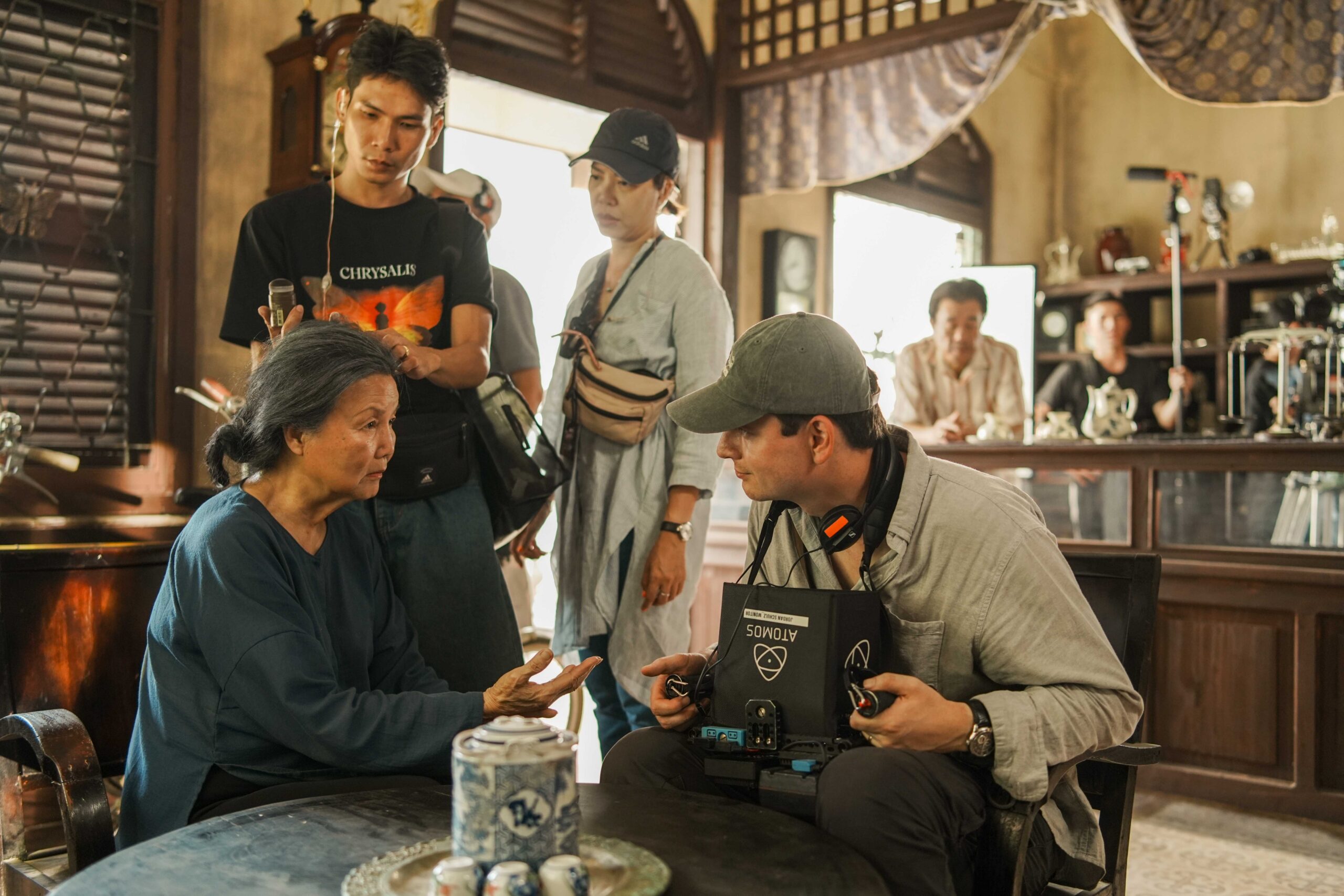
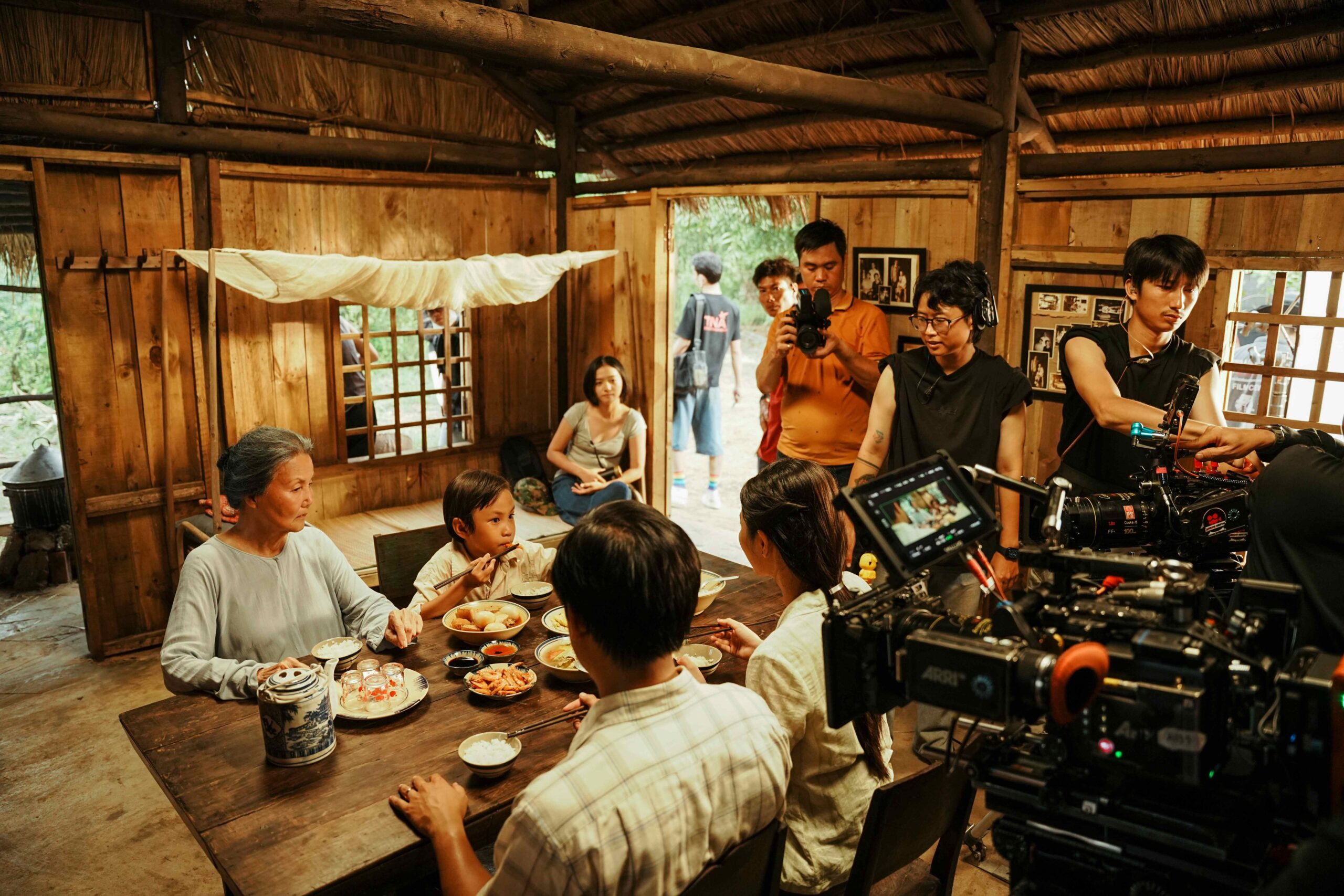
A Star Returns
The return of acclaimed acress Kiều Chinh to her homeland adds another layer of authenticity to Chrysalis, grounding the film in lived experience that bridges generations.
Known for her groundbreaking roles in both Vietnamese and Hollywood cinema — including The Joy Luck Club and Journey from the Fall— Kiều Chinh embodies the role of Bà Nội, Daniel’s grandmother. Her portrayal marks a symbolic homecoming, both artistically and personally. Returning to Vietnam to play a role rooted in love, sacrifice, and cultural memory, Chinh brings quiet strength and emotional precision to the matriarch who anchors the story’s heart. Her presence carries the weight of a woman who has seen her world dismantled and yet continues to nurture what little remains with dignity and grace.
Her role in Chrysalis is not just a performance; it is a gesture of reclamation, both personal and cinematic. Bà Nội is the film’s emotional centrepiece — the soul around which the story turns. Through her, Chrysalis becomes not just a tale of survival, but of inheritance — the transmission of resilience through care, through sacrifice, through the smallest acts of love. She is Daniel’s refuge in a collapsing world, offering him the tenderness and stability that war and abandonment have stolen.
Their relationship unfolds in gestures more than words: the way she watches over him as he draws, the quiet meals they share, the moments she hides her own hunger to feed him first. In her, Winn captures the sacred, everyday heroism of Vietnamese womanhood — the kind that endures not through defiance, but through devotion.
Joining her is a cast of Vietnamese and international actors, including rising local talent. The cast doesn’t just perform the story, they inherit it in grounded performances. Co-producers Trương Ngọc Ánh and Vietnamese-American actor Tien Pham portray Daniel’s birth mother and stepfather, while Samuel An takes on the complicated role of Long, the father who returns only to disappear again. Rounding out the cast are Lan Thy as Hoa, the stepmother, and Le Anh Huy as young adult Daniel. A constellation of beloved Vietnamese actors — including Hiếu Hiền, Phi Phụng, and Trịnh Tú Trung — take on supporting roles, bringing warmth and levity to the film’s heavier moments.

Beyond Labels
Winn has described his artistic practice as a lifelong effort to transform absence into meaning. In Chrysalis, that idea reaches its most expansive form. The film explores his recurring wounds of scarcity, abandonment, trauma, loss, displacement—not as dramatic devices, but as existential conditions. He captures what it feels like when goodbye is the only option left.
Though rooted in Winn’s Vietnamese childhood shadowed by war at home and abroad, Chrysalis speaks to universal human experiences — overcoming abuse, navigating fractured families, finding resilience through creativity, and the quest to define oneself amid displacement. It’s not only a story of an immigrant or an artist — it’s a mirror of survival and the human condition itself. “Whoever looks at my work—painting, sculpture, or film—can see themselves in it. They can see pain, struggle, and triumph that go beyond labels.”
Beyond its visual and philosophical scope, Chrysalis reflects Winn’s lived experience as a LGBTQ+ Vietnamese-American artist — navigating identity, belonging and acceptance across cultures. “Being gay, yes, it has affected me. I’ve been criticized, mocked, and looked down on for simply being who I am. But I believe everyone experiences trauma in some way. I incorporate that into my art. My identity and experiences are all reflected in it, because I want to share something universal.”
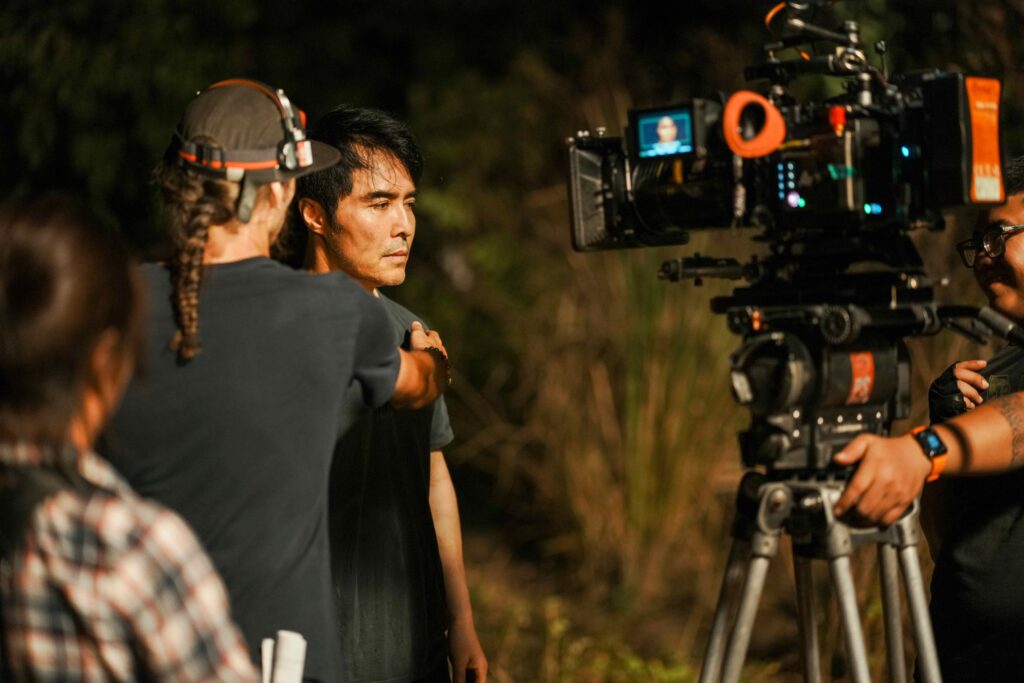
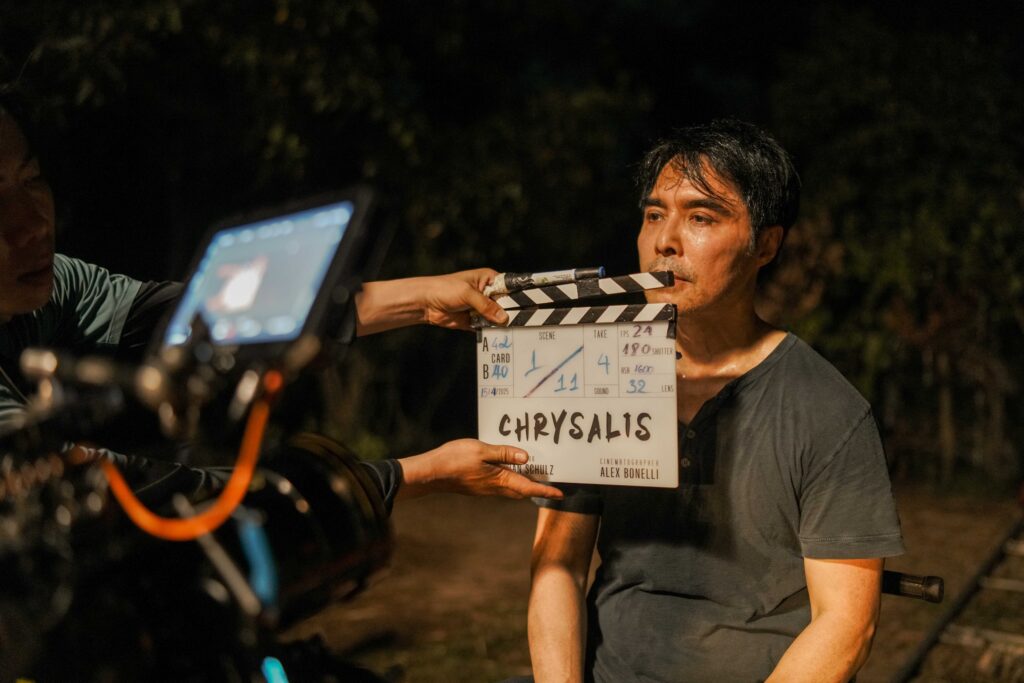
Winn on Screen: Presence, Not Performance
The themes of Chrysalis—trauma, rebirth, metamorphosis, identity fragmentation—are deeply resonant in a world still reeling from global dislocation. But in Winn’s hands, these themes are never heavy-handed. Instead, they unfold with the careful symbolism and visual poetry that have defined his work for decades.
In a film so deeply engaged with memory and identity, Winn doesn’t just tell the story — he lives it on screen. Portraying himself with quiet conviction, he anchors key scenes with a presence that feels both intimate and unflinching. His performance is grounded, and emotionally precise — the kind of work that belongs to someone with more than a personal stake, but a deep sense of craft.
Filming in Vietnam, often in spaces tied to his own past, the film at times dissolves the boundary between fiction and remembrance. What unfolds feels less like acted drama and more like stepping into someone’s memory; raw, reflective, and real. Winn doesn’t just remember Vietnam—he re-enters it, and brings the viewer with him. This biographical film paints a poignant portrait of a man who breaks from his past, yet embraces it as part of his journey to becoming his fullest, truest self. Chrysalis turns lived experience into art and art into healing.
“When people see my work—whether it’s a painting, sculpture, or even my film—I want them to walk away seeing and feeling themselves, understanding who they are. It’s like looking in a mirror. They’re seeing themselves: past, present, and possibly future.”










